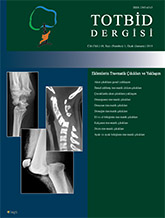
Patient satisfaction following total knee replacement is highly related to achieved degree of postoperative range of motion. In general, stiffness is defined as suboptimal range of motion following surgery with limited flexion and an arc of motion less than 90° in 6-week follow-up. The reported incidence of stiffness following total knee replacement is as high as 60% in the literature. Initially, after exclusion of external clinical conditions prior to primary surgery, such as ipsilateral hip arthrosis, neurological disorders that lead to muscle stiffness, heterotrophic ossification and reflex sympathetic dystrophy, intrinsic factors arising from inadequate surgical technique, should be investigated. Patients with flexion limited to 90° or less, moderate to severe pain, and important functional impairment should be considered for treatment. In early period and selected patients, manipulation under anesthesia is the first-line treatment option while in later periods surgical treatment alternatives are mandatory. The purpose of this review is to present a systematic evaluation and treatment strategy that addresses stiffness following total knee arthroplasty.